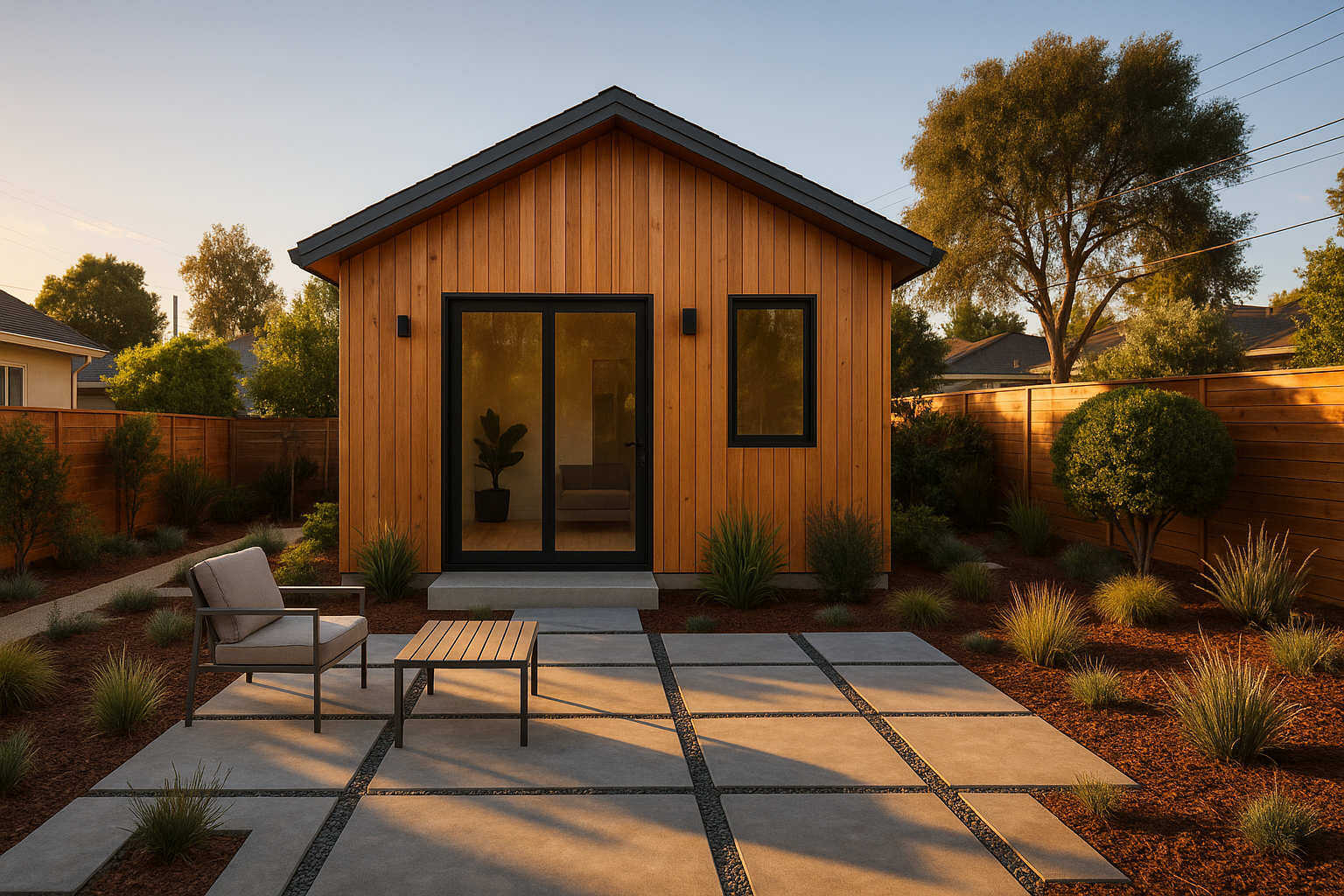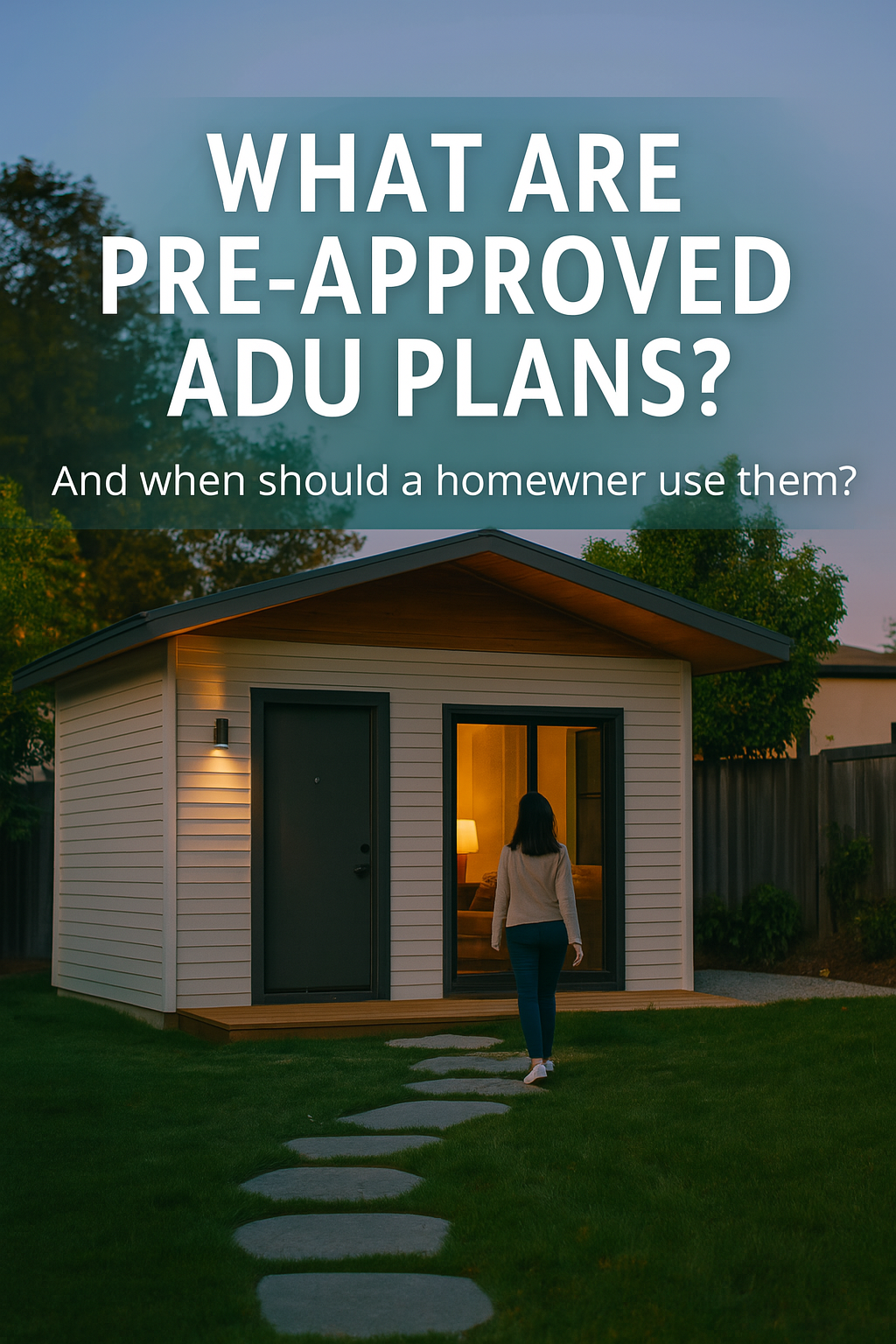Accessory Dwelling Units (ADUs) 101
Everything a first-time builder needs to go from curious to confident.

Feeling squeezed for space—or just looking to make smarter use of your property? Accessory Dwelling Units (ADUs) are changing the game for homeowners across California and beyond. Whether you're aiming to create rental income, support family members, or increase your property's resale value, an ADU might be the most practical investment you can make.
This guide will walk you through everything you need to know to get started with confidence.
What Is an ADU?
An Accessory Dwelling Unit (ADU) is a self-contained residential unit that shares the same lot as a primary home. It includes a kitchen, bathroom, living area, and sleeping space.
Common Types of ADUs
- Detached ADU – A separate building in the backyard
- Attached ADU – Connected to the main home
- Garage Conversion – Transforms an existing garage into a livable space
- Basement Conversion – Converts a basement into a legal unit
- Junior ADU (JADU) – Up to 500 sq ft, often shares a bathroom with the main home
Step 1: Clarify Your Purpose
Why are you building an ADU? Your answer will influence your budget, layout, and how you approach design and permitting.
Examples:
- Rental income? A detached or garage unit offers more privacy for tenants.
- Family or caregiver housing? Consider an attached ADU or JADU.
- Boost property value? A well-designed ADU can significantly increase resale appeal.
Step 2: Check Your Property’s Eligibility
Before sketching floor plans, make sure your property qualifies for an ADU.
Key Questions:
- Is your lot zoned for single- or multi-family housing?
- Do you meet setback, height, and lot coverage requirements?
- Is there room for utility access or parking (if required)?
🔍 Pro Tip: Use your local city website or zoning tool to confirm eligibility. In many parts of California, you can now build a detached ADU up to 1,200 sq ft—even on single-family lots.
Step 3: Understand the Costs
Building an ADU is a serious investment, and costs can vary widely based on size, location, and type.
Estimated Cost Ranges:
- Detached ADU: $150,000 – $400,000+
- Attached ADU: $100,000 – $250,000
- Garage Conversion: $80,000 – $180,000
- Basement/JADU: $40,000 – $120,000
Don’t forget additional expenses:
- Architecture and design
- City permits and impact fees
- Utility upgrades (sewer, electrical, water)
- Site work or foundation prep
Step 4: Navigate the Permit Process
You can’t skip permitting—every ADU must comply with local codes and pass city inspections.
Steps to expect:
- Submit architectural plans
- Go through zoning and building code review
- Secure a permit
- Pass inspections throughout construction
⚡ Local Insight: Some California cities now offer pre-approved ADU plans—these can significantly speed up permitting.
Step 5: Build Your ADU Team
While it’s possible to manage your ADU project solo, most homeowners work with professionals to avoid delays and mistakes.
Your ADU team might include:
- Architect or Designer: Creates code-compliant plans
- General Contractor or ADU Builder: Manages construction
- Engineer: Required for structural changes
- Permit Specialist (optional): Helps navigate local red tape
Turnkey Option: Some prefab companies offer full-service solutions that handle design, permitting, and building for you.
Step 6: Know the Timeline
Building an ADU takes time—and patience. Here's a rough estimate of the process:
- Research and Planning: 1-2 Months
- Permitting: 2-4 Months
- Construction: 4-9 Months
Factors like city backlog, utility coordination, and contractor availability can impact your timeline.
Step 7: Understand the Long-Term ROI
An ADU isn’t just an expense—it’s an asset.
Potential returns:
- Rental income: $1,500–$3,500/month (varies by location)
- Increased property value: ADUs can boost resale by $100K or more
- Tax benefits: May include depreciation and mortgage interest deductions (talk to your CPA)
- Lifestyle flexibility: Great for aging in place, working from home, or multigenerational living
Financing Your ADU (Optional but Important)
If you’re not paying cash, here are common financing strategies:
- HELOC (Home Equity Line of Credit)
- Cash-Out Refinance
- Construction Loans
- Local grants or incentives (e.g., from cities like Los Angeles, Oakland, Portland)
- ADU-specific loans based on projected rental income





